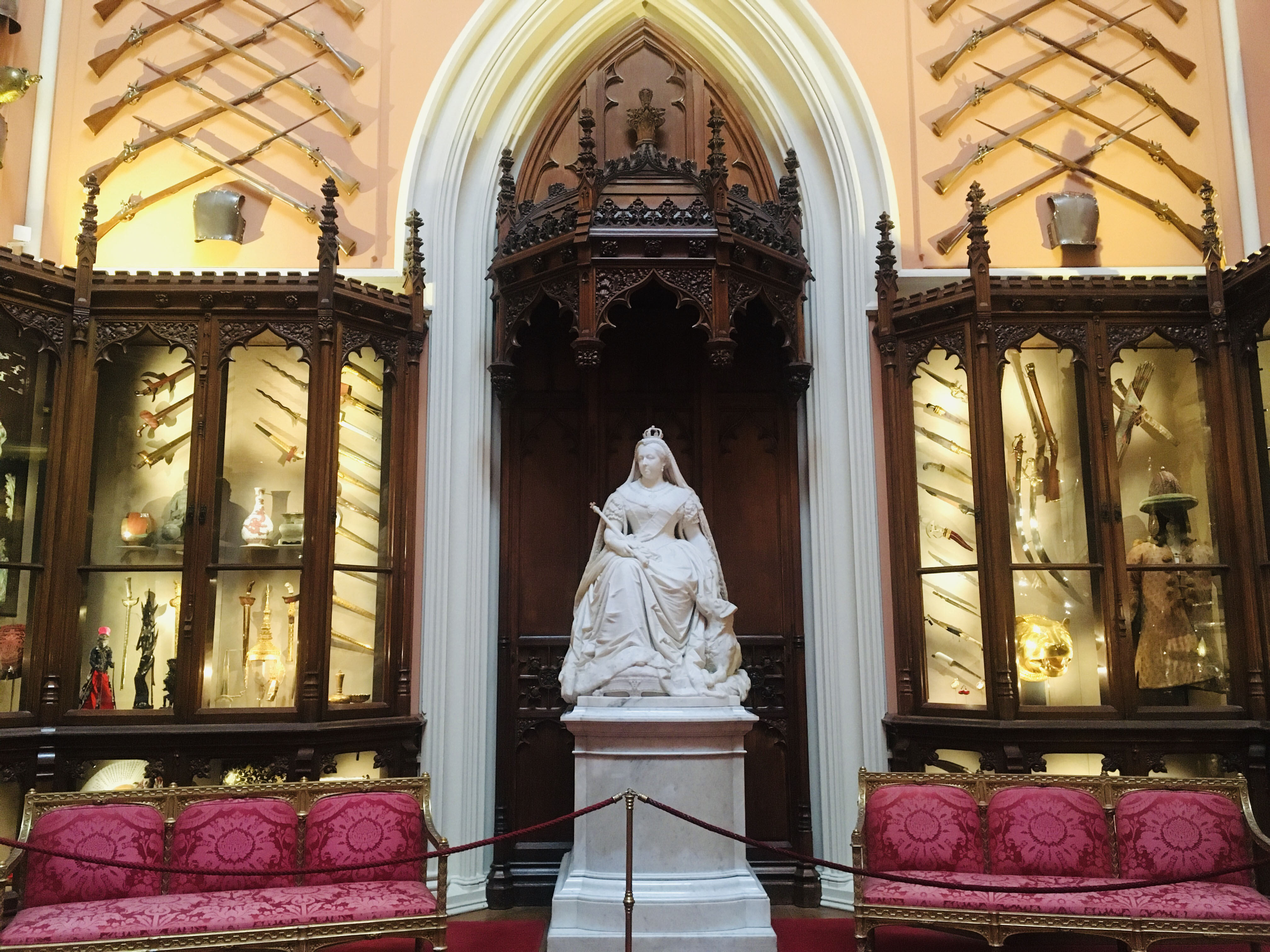
Grand Vestibule: The British Monarchy and the World
The Grand Vestibule at Windsor Castle reflects interaction between the monarchy and the wider world
Algiers
Firearms and edged weapons encrusted with coral were popular throughout the Ottoman Empire, especially during the eighteenth and nineteenth centuries when sophisticated centres of production developed amid fierce competition for coral harvests. Coral was also highly valued in Europe, so elaborately inlaid North African firearms were frequently sent as diplomatic gifts to European courts. Those in the Royal Collection are among the finest of any presented.
The items displayed here formed part of two lavish diplomatic gifts sent by the Deys of Algiers to the British Court in 1811 and 1819. The first, intended for George III, was received by his son George IV as Prince Regent. According to the British Consul in Algiers, Henry Stanyford Blanckley, the Dey of Algiers 'had determined to send a present of more than usual magnificence to the King'. The gifts included coral-inlaid guns and pistols, a diamond-encrusted sabre and two fully rigged saddles, as well as boxes, shawls and leopard skins. Similar items were presented in 1819, with 'six beautiful horses'. The gifts were displayed in the Armoury at Carlton House, where they were greatly admired. Not all were immediately understood, however: the Inventory records confusion over whether the ornate silver-gilt powder flasks were 'for the purpose of holding Gun Powder or Liquor'.







